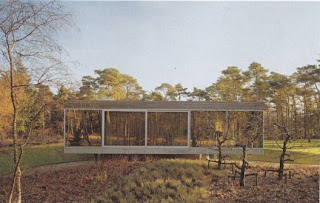REM KOOLHAAS
Wednesday, April 10, 2013
Biography
Remment Lucas Koolhaas was born on November 17, 1944 in Rotterdam, Netherlands. He is most know by Rem for short. His father was a script writer and film critic as his maternal grandfather was a modernist architect. Those two, of which, he followed in footsteps.
From age eight to twelve Koolhaas and his two younger siblings lived with their father in Jakarta, Indonesia. Koolhaas took up journalism as a career, writing for the Haagse Post. At the same time, he began socializing with film students and even dabbled in film school for a bit. The possible filmmaker even wrote several screenplays for Hollywood directors, which were never produced. The particular career option had always been lurking in the back of his mind, and one day while speaking to a group of architectural college students Koolhaas realized that it what he truly wanted to do. He he studied at the Architecture Association School in London.
As a Dutch Architect, Architectural Theorist, and Professor; Koolhaas lived out his dreams. He was a founding partner of OMA(Office for Metropolitan Architecture) and AMO, he wrote many books, co-founded the Volume Magazine, taught at Harvard's school of design, and accomplished much more.
Throughout his career, some of his awards include but are not limited to: Chevalier de legion d'honneur, Praemium, Royal Institute of British Architects Gold Medal, Pritzker Prize, Architekturpreis Berlin, and Mies van der Rohe Award.
From age eight to twelve Koolhaas and his two younger siblings lived with their father in Jakarta, Indonesia. Koolhaas took up journalism as a career, writing for the Haagse Post. At the same time, he began socializing with film students and even dabbled in film school for a bit. The possible filmmaker even wrote several screenplays for Hollywood directors, which were never produced. The particular career option had always been lurking in the back of his mind, and one day while speaking to a group of architectural college students Koolhaas realized that it what he truly wanted to do. He he studied at the Architecture Association School in London.
As a Dutch Architect, Architectural Theorist, and Professor; Koolhaas lived out his dreams. He was a founding partner of OMA(Office for Metropolitan Architecture) and AMO, he wrote many books, co-founded the Volume Magazine, taught at Harvard's school of design, and accomplished much more.
Throughout his career, some of his awards include but are not limited to: Chevalier de legion d'honneur, Praemium, Royal Institute of British Architects Gold Medal, Pritzker Prize, Architekturpreis Berlin, and Mies van der Rohe Award.
World's Most Controversial Architect
Smithsonian magazine
Age has not tempered the Dutch architect, who at 67 continues to shake up the cultural landscape with his provocative designs
Rem Koolhaas has been causing trouble in the world of architecture since his student days in London in the early 1970s. Architects want to build, and as they age most are willing to tone down their work if it will land them a juicy commission. But Koolhaas, 67, has remained a first-rate provocateur who, even in our conservative times, just can’t seem to behave. His China Central Television headquarters building, completed this past May, was described by some critics as a cynical work of propaganda and by others (including this one) as a masterpiece. Earlier projects have alternately awed and infuriated those who have followed his career, including a proposal to transform part of the Museum of Modern Art into a kind of ministry of self-promotion called MoMA Inc. (rejected) and an addition to the Whitney Museum of American Art that would loom over the existing landmark building like a cat pawing a ball of yarn (dropped).
Koolhaas’ habit of shaking up established conventions has made him one of the most influential architects of his generation. A disproportionate number of the profession’s rising stars, including Winy Maas of the Dutch firm MVRDV and Bjarke Ingels of the Copenhagen-based BIG, did stints in his office. Architects dig through his books looking for ideas; students all over the world emulate him. The attraction lies, in part, in his ability to keep us off balance. Unlike other architects of his stature, such as Frank Gehry or Zaha Hadid, who have continued to refine their singular aesthetic visions over long careers, Koolhaas works like a conceptual artist—able to draw on a seemingly endless reservoir of ideas.
His Influence
Rem had first gone to school for theatre and script writing following in his father's footsteps. But, years later he returned to school to obtain his degree in architecture. His generation of architectures were the first to have the ability to work almost anywhere in the world that they wished to. Many architectures repeat the same building forms in each place that they would build. The form of architecture slowly molded into something universal rather than unique. The change from each ethnic region having their own style to everyone having the same basic style. But Rem wanted to change that. He chose to change his architecture for each piece that he built to make them each unique with their own identity. I believe that Rem's architecture helped bring originality back into architecture, and will continue to influence architectures of the future to create something new and different with each job.
Subscribe to:
Comments (Atom)

.jpg)




